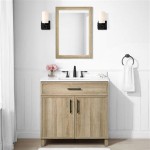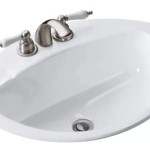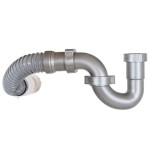How to Make a Bathroom Vanity Fitters Charge Per Day: A Comprehensive Guide
Determining a fair and competitive daily rate for bathroom vanity fitters requires a nuanced understanding of numerous factors. The final charge per day is not a fixed figure but rather a calculation based on project scope, experience level, location, and various overhead costs. This article outlines the key considerations involved in establishing a daily rate for bathroom vanity fitters, providing a clear and informative guide to ensure profitability and customer satisfaction.
Understanding the Scope of Work
The first and arguably most crucial step in determining a daily rate is a thorough assessment of the scope of work. This involves a detailed examination of the installation requirements, including the type of vanity, the complexity of the plumbing, and any necessary preparatory work. A simple wall-mounted vanity installation will invariably command a lower daily rate compared to a complex custom-built vanity with intricate plumbing and electrical connections.
Consider the following elements when evaluating the scope of work:
*Vanity Type:
Is it a pre-assembled unit, a flat-pack requiring assembly, or a custom-built piece? Assembly time significantly impacts the overall time required. *Plumbing Requirements:
Does the installation involve simple connections to existing plumbing, or does it necessitate rerouting pipes, installing new supply lines, or adjusting drain locations? More complex plumbing will increase the daily rate. *Electrical Work:
Does the vanity include integrated lighting or require electrical outlets? Electrical work must be performed by a qualified electrician and will add to the overall project cost, potentially impacting the daily rate if the fitter coordinates this aspect. *Surface Preparation:
Does the wall require patching, painting, or tiling before the vanity can be installed? Addressing surface imperfections can add significant time to the project. *Demolition of Existing Fixtures:
Is there an existing vanity that needs to be removed and disposed of? Demolition and disposal are time-consuming and require appropriate tools and safety measures. *Accessibility:
Is the bathroom easily accessible, or are there obstructions that will slow down the installation process? Limited accessibility can increase the time required. *Materials Sourcing:
Is the fitter responsible for sourcing and transporting materials, or are these provided by the client? Material sourcing adds to the administrative burden and logistical complexity. *Project Timeline:
A tighter deadline might warrant a higher daily rate due to the increased pressure and potentially working longer hours.Accurately defining the scope of work allows the fitter to realistically estimate the time required for the project and, consequently, determine a fair daily rate.
Calculating Direct Costs
Direct costs represent the expenses directly attributable to the bathroom vanity installation. These costs must be accurately calculated to ensure profitability. The core component of direct costs is the fitter's hourly wage, which should reflect their skill level, experience, and prevailing market rates. However, this is not the only expense to consider.
Key direct costs include:
*Hourly Wage:
Research local market rates for bathroom vanity fitters with comparable experience. This can be achieved through online job boards, industry associations, or contacting other professionals in the field. *Labor Burden:
This includes employer-related taxes, such as Social Security and Medicare, as well as workers' compensation insurance and unemployment insurance. These costs can significantly increase the overall labor cost. *Materials:
Even if the client provides the vanity unit, the fitter will likely need to supply ancillary materials such as screws, adhesives, sealant, shims, and potentially small plumbing components. These costs should be factored into the daily rate. *Tools and Equipment:
The fitter needs to maintain and replace tools regularly. A portion of the tool depreciation cost should be allocated to each project. This includes items like drills, saws, levels, plumbing tools, and safety equipment. *Transportation Costs:
Transportation costs include fuel, vehicle maintenance, and insurance. These costs can be substantial, especially if the fitter travels long distances to job sites. *Waste Disposal:
Disposal fees for demolition debris and packaging materials must be factored into the direct costs.Once all direct costs have been identified and quantified, the total cost of labor and materials for a single day's work can be calculated. This figure provides a foundation for determining the daily rate.
Accounting for Overhead and Profit Margin
In addition to direct costs, bathroom vanity fitters must account for overhead expenses and a profit margin. Overhead expenses are indirect costs associated with running the business, which are not directly tied to a specific project. A profit margin is necessary to ensure the long-term financial viability of the business.
Common overhead expenses include:
*Office Rent or Mortgage:
If the fitter operates from a physical office space, the rent or mortgage payments are considered overhead. *Utilities:
Electricity, water, and gas bills for the office or workshop are overhead expenses. *Insurance:
General liability insurance and professional indemnity insurance are essential for protecting the business from potential liabilities. *Marketing and Advertising:
Costs associated with promoting the business, such as website development, online advertising, and print advertising, are overhead expenses. *Administrative Costs:
These include expenses such as accounting fees, legal fees, and software subscriptions. *Vehicle Depreciation:
The depreciation of work vehicles is considered an overhead expense. *Phone and Internet:
Communication expenses are essential for running the business.Calculating overhead expenses requires tracking all business-related expenses over a period of time, typically a year. The total overhead expenses are then divided by the number of billable days to determine the overhead cost per day. This figure is added to the direct costs to arrive at the total cost of doing business per day. Finally, a profit margin is added to the total cost to determine the daily rate.
The appropriate profit margin will depend on factors such as market conditions, competition, and the fitter's desired level of profitability. A profit margin of 15-20% is generally considered reasonable in the construction industry.
Furthermore, consider these contributing factors:
*Guarantee & Warranty:
If the fitter is offering a warranty on the installation, the added cost of providing the service needs to be factored in. *Reputation and Brand Recognition:
An experienced fitter with a proven track record and a strong reputation can often command a higher daily rate. *Specialization:
Fitters with specialized skills, such as custom vanity design or complex plumbing expertise, can justify a premium daily rate. *Geographic Location:
Daily rates can vary significantly depending on the location. Urban areas with higher costs of living typically command higher rates. *Seasonal Demand:
During peak seasons, such as spring and summer, demand for bathroom vanity fitters may increase, allowing for higher daily rates.It is imperative to periodically review and adjust daily rates to reflect changes in market conditions, material costs, and operating expenses. Neglecting to do so can lead to reduced profitability and potentially put the business at a competitive disadvantage.
Ultimately, determining a fair and competitive daily rate for bathroom vanity fitters requires a comprehensive approach. By carefully considering the scope of work, accurately calculating direct costs, and accounting for overhead expenses and a profit margin, fitters can ensure that they are adequately compensated for their time and expertise while remaining competitive in the market.

2024 Bath Fitter Cost A Guide

2024 Bath Fitter Cost A Guide

How To Install A Vanity Forbes Home

Bathroom Vanity Installation Cost 2024 Average S

How To Diy A Bathroom Vanity Unit Wood Create

How To Diy A Bathroom Vanity Unit Wood Create

Diy Bathroom Floating Vanity With Drawers Hydrangea Treehouse

Bathroom Remodeling Cost A Detailed View For The Homeowners

2024 Bathroom Remodel Cost Average Renovation Redo Estimator

A Step By Guide To Designing Your Bathroom Vanity
Related Posts







